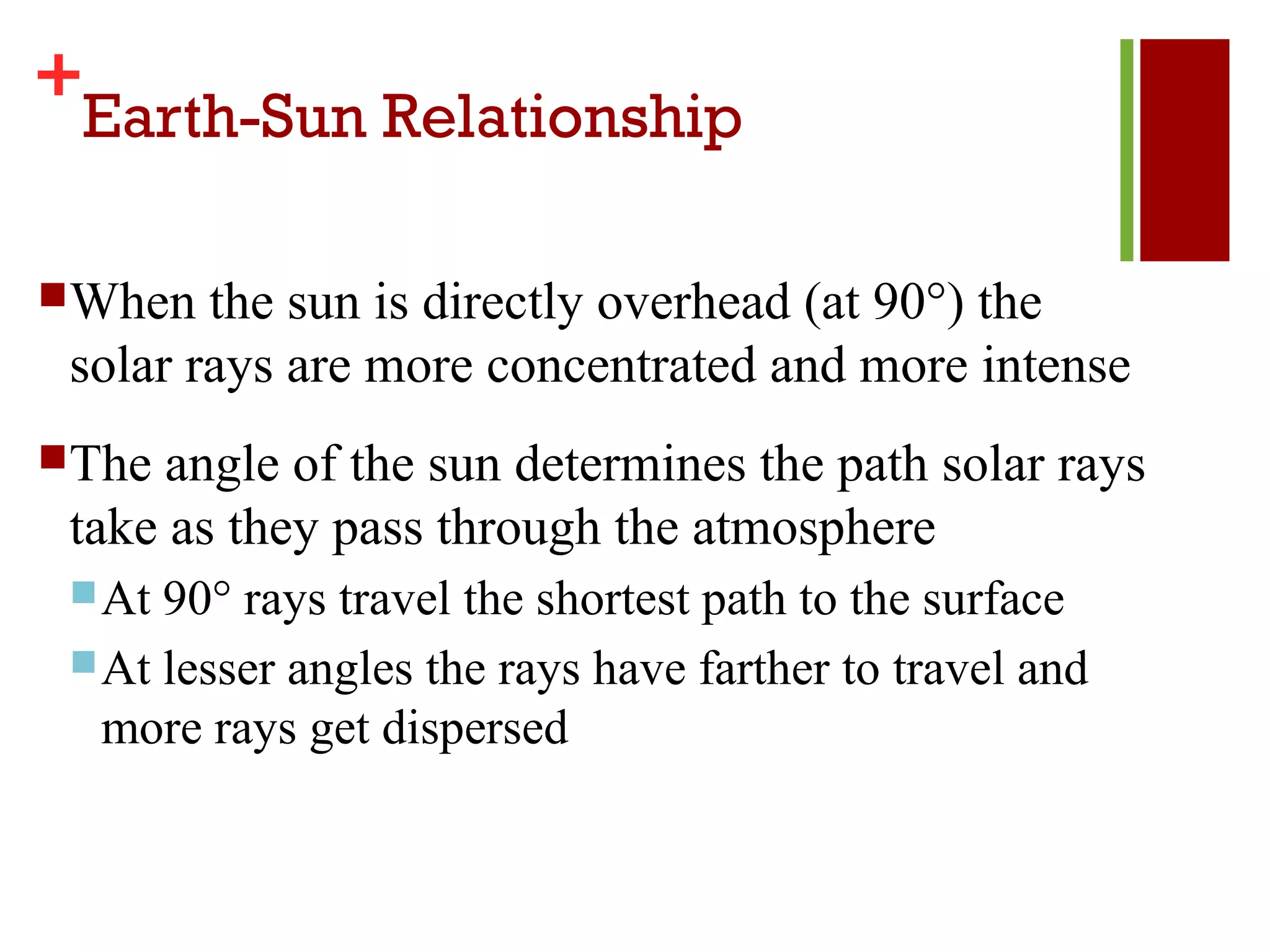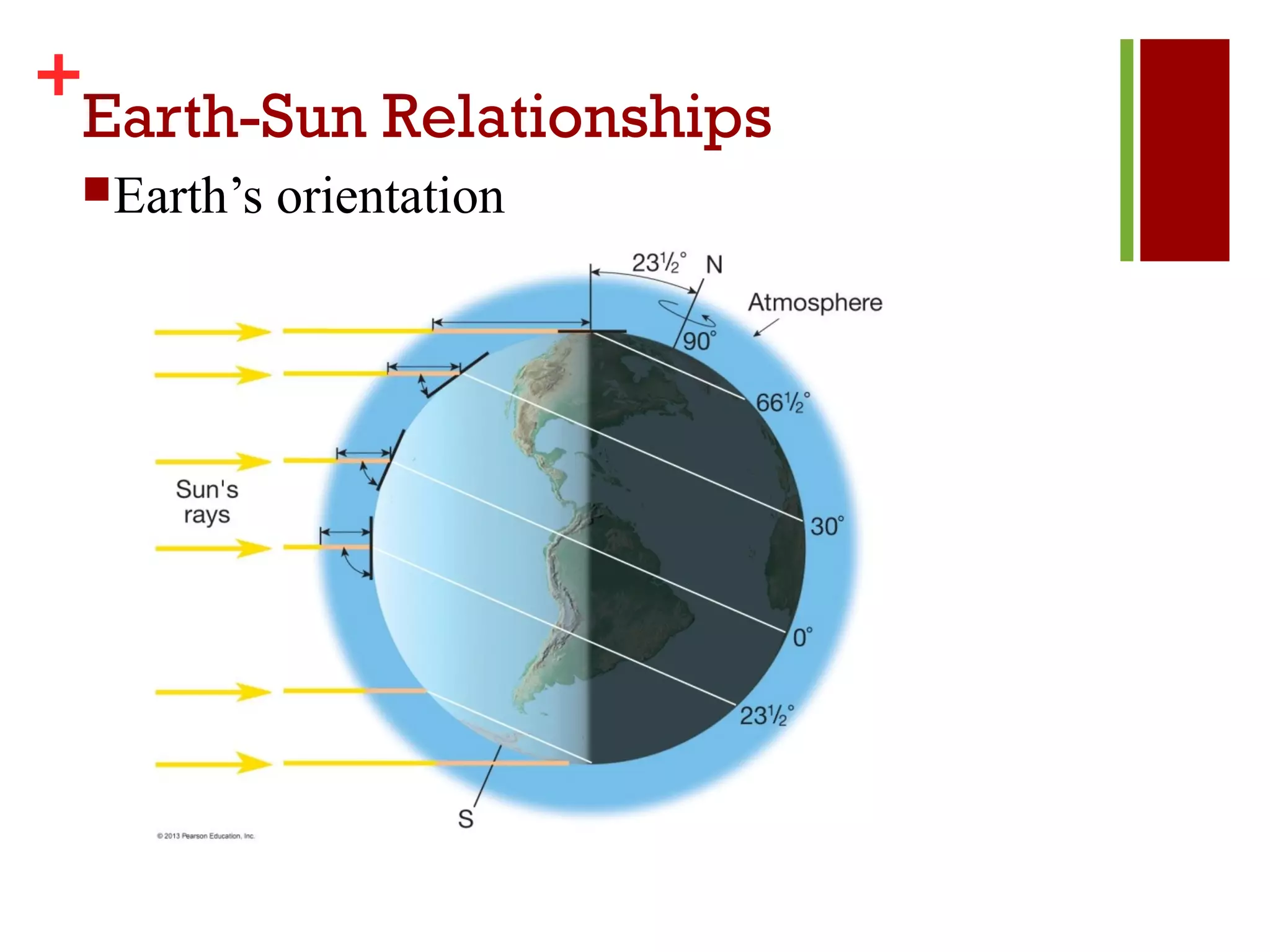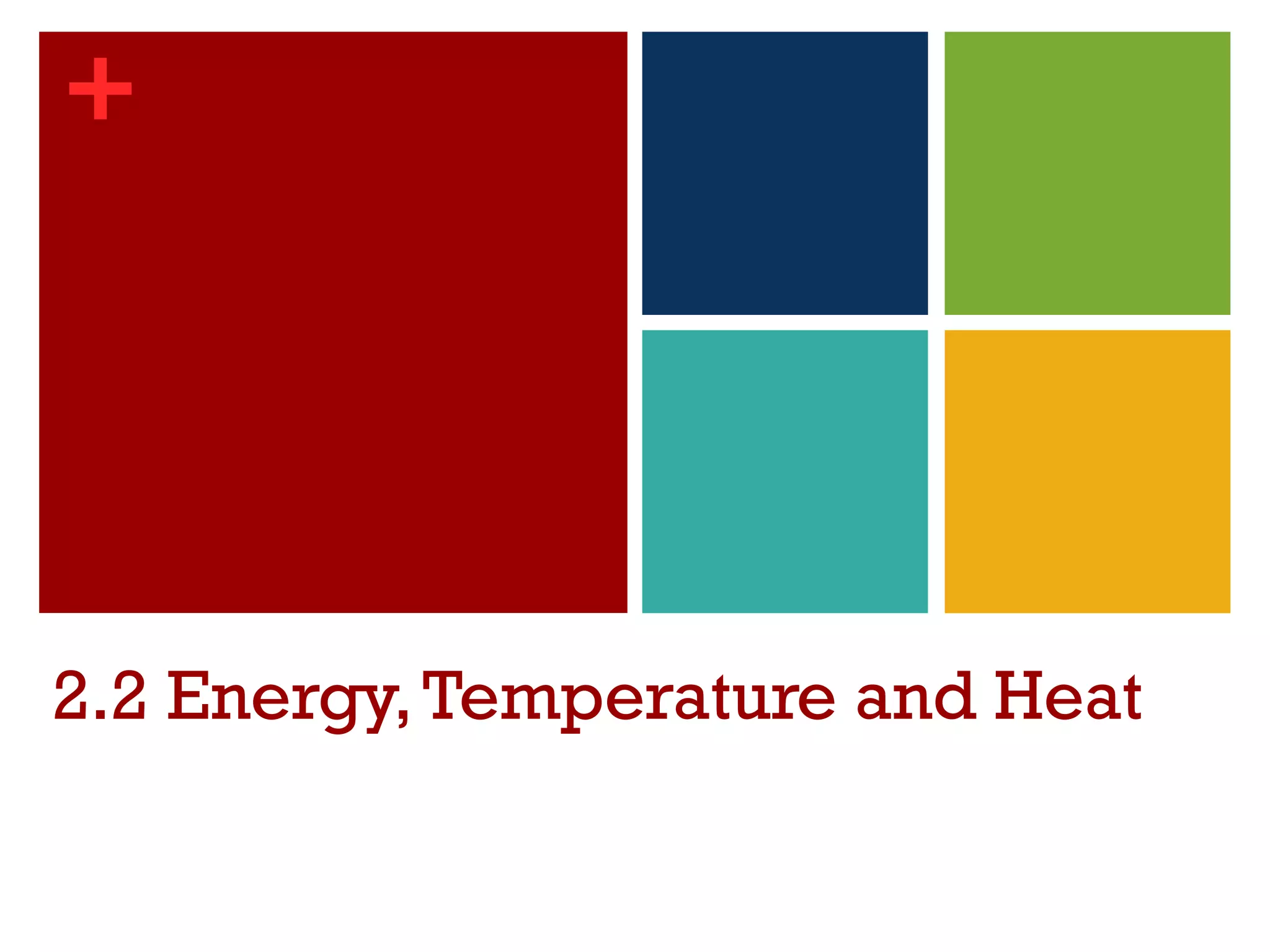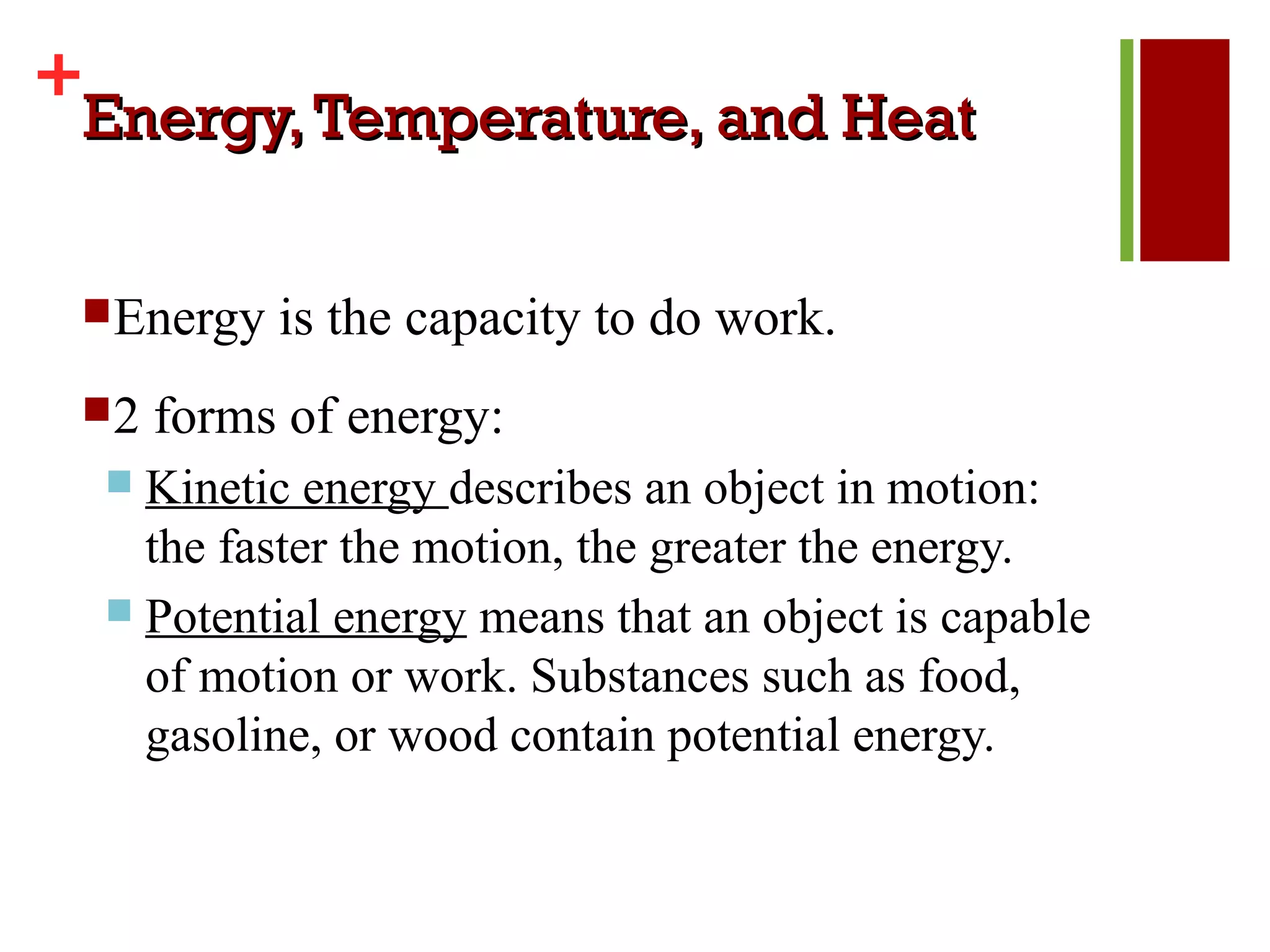The document discusses Earth's heat budget and the factors that influence it. It explains that Earth receives energy from the sun and loses energy through radiation and that these energy inputs and outputs must balance annually for Earth's overall heat budget. However, there are imbalances at different latitudes that drive winds and ocean currents to redistribute heat globally. Key concepts covered include the greenhouse effect, mechanisms of heat transfer like conduction and radiation, and how gases in the atmosphere impact heating.



































